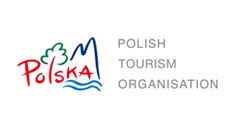Financial Times analysts appreciate Polish “cities of the future”

On numerous occasions the potential of Polish cities has already been acknowledged and appreciated by international entities, companies and institutions. Now the time has come for the acclaim of analysts representing fDi intelligence, an agency that is a part of the FT Ltd. group. Specialists conducted major research dedicated to Polish metropolises, whose outcome was presented with breakdown into five categories: Economic Potential, Human Capital, Cost Effectiveness, Connectivity and Business Friendliness.
It is worth stressing that the outcome of research in each category was presented in such a manner as to separately analyse large cities (with a population greater than 250,000), their mid-sized counterparts (population between 100,000 and 250,000) and small locations (population below 100,000).
According to fDi Intelligence researchers, Warsaw, Kraków, Wrocław and Gdańsk boast the greatest economic potential. In the same category, Gdynia reigned supreme among mid-sized cities, followed by Tychy, Legnica, Opole and Gliwice. Smaller locations were also recognised by the analysts, with particular emphasis on towns set in the vicinity of Warsaw: Błonie and Grodzisk Mazowiecki. Września, Stryków and Niepołomice near Kraków were next on the list. GDP per capita, total registered unemployed and a balance of migration were among the judging criteria of economic potential in the discussed category.
Warsaw, Kraków, Wrocław along with Poznań and Gdańsk were the winners among large cities featuring the greatest human capital. Rzeszów made its presence known as the winner among mid-sized cities, followed by Tarnów, Gdynia, Chorzów and Toruń. In turn, Pruszków, Września, Mielec, Błonie and Grodzisk Mazowiecki were picked by Financial Times analysts in the group of small cities.
Białystok came top for cost effectiveness, with Lublin, Łódź, Szczecin and Kraków right behind it in the category of large cities. Tarnów and Chorzów, followed by Gorzów Wielkopolski, Sosnowiec and Częstochowa, were most successful among mid-sized cities. Radomsko and Piotrków Trybunalski stood out in the group of small locations. Nowa Sól, Stargard Szczeciński and Stryków placed further down the list.
Warsaw can safely be declared the unquestionable leader of the study in the group of large cities. The Polish capital also triumphed in the connectivity category, in which it surpassed Kraków, Wrocław and Gdańsk, equally high-ranking in other areas. This elite group was this time joined by Katowice which placed third. Sosnowiec was the winner in the group of mid-sized cities, with Chorzów and Tychy also securing podium places and Tarnów and Częstochowa right behind. Finally, Pruszków boasts the greatest connectivity among cities with a population below 100,000. The fDi Intelligence analysts also included Błonie, Niepołomice, Grodzisk Mazowiecki and Mysłowice in this group. Results of the connectivity category took into account, i.a. percentage of enterprises with broadband access and kilometres of road surfaced.
Source: nowymarketing.pl, fdiintelligence.com



